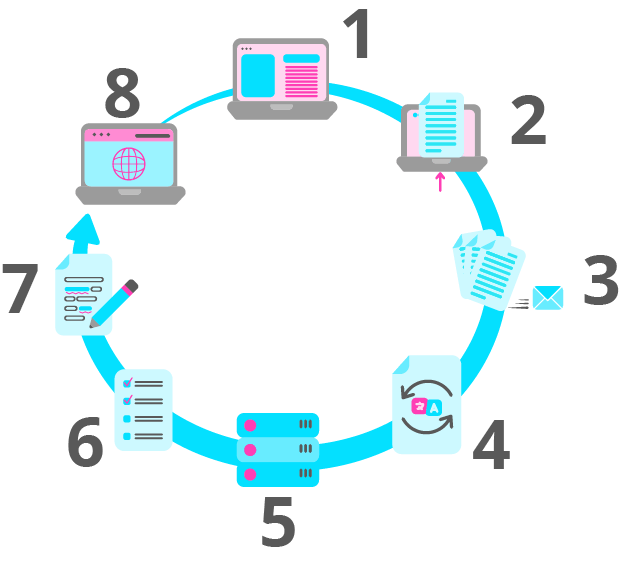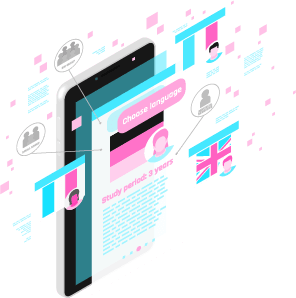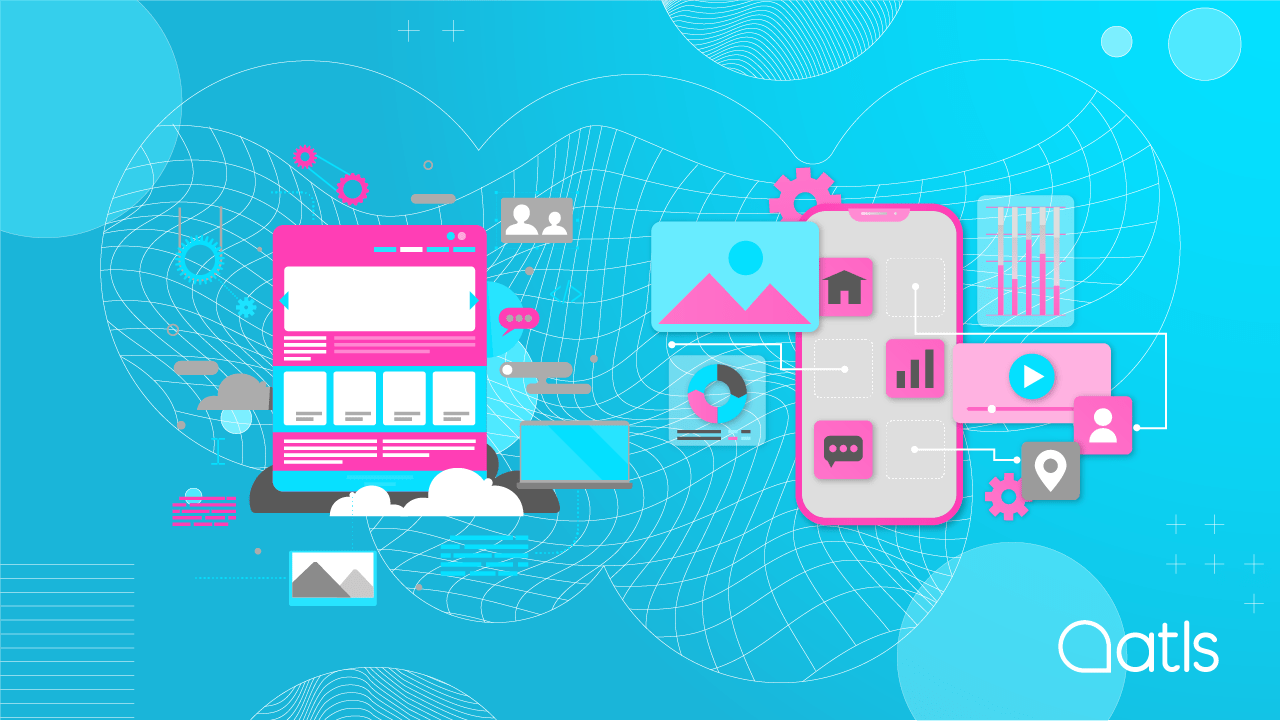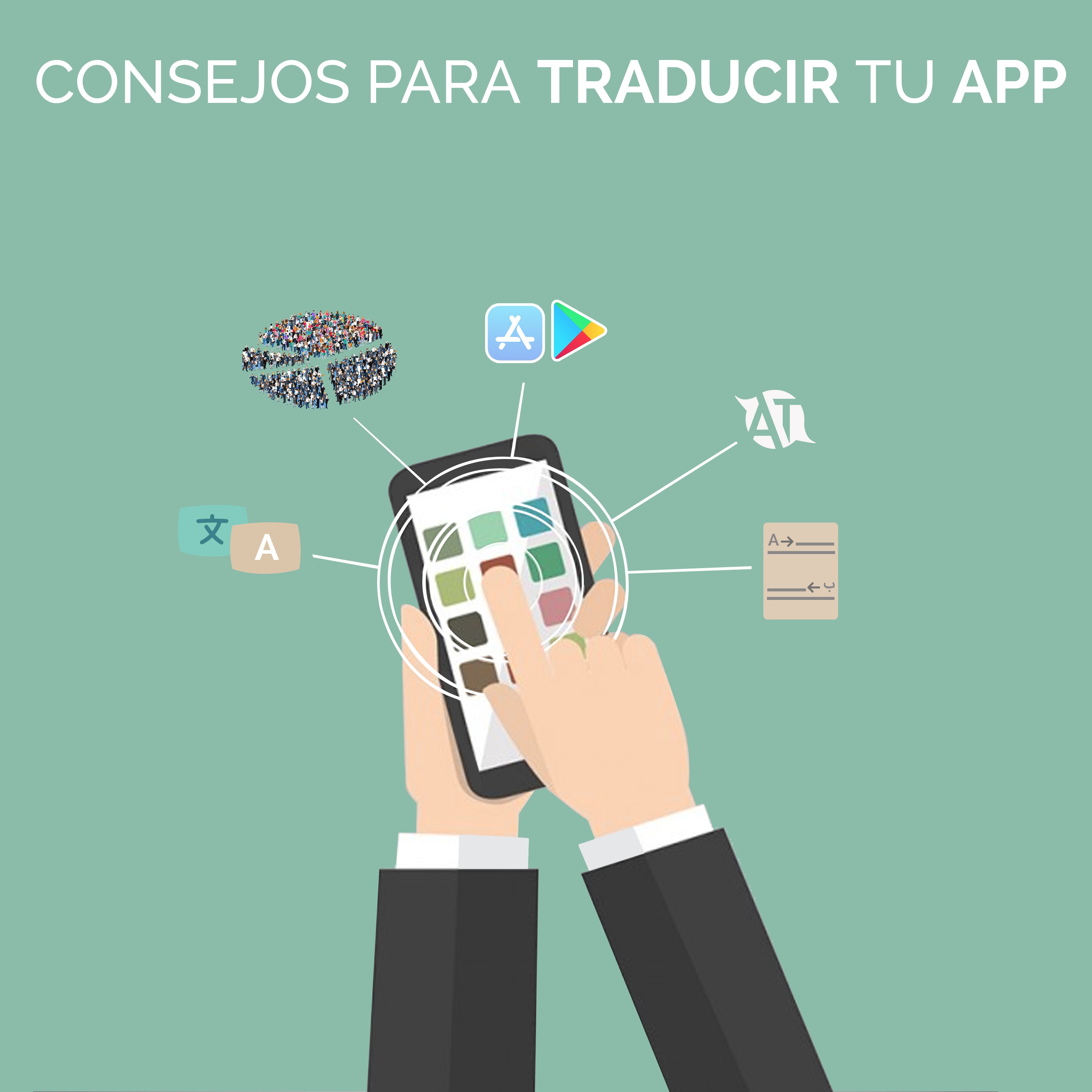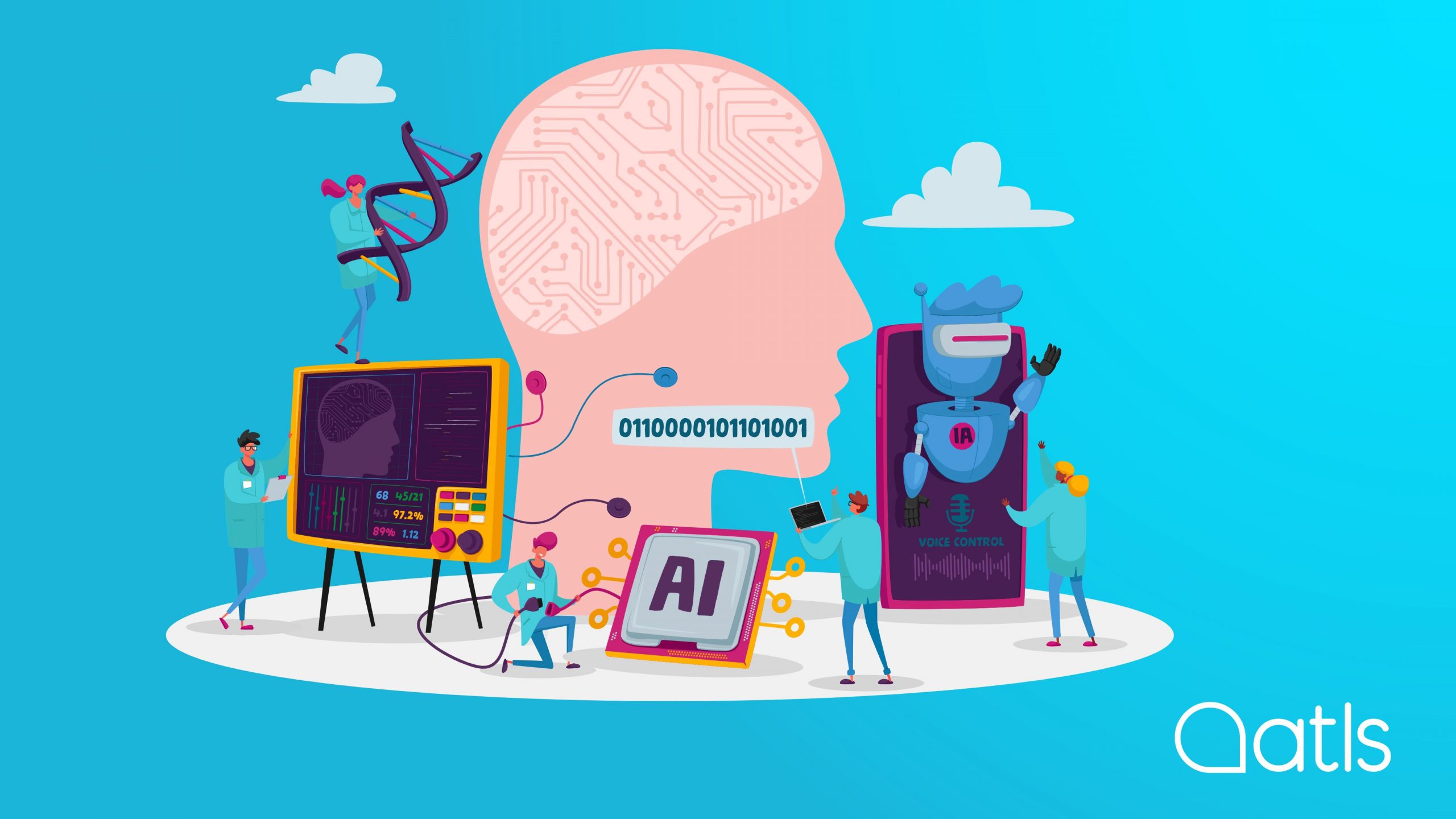AT-WST: the definitive software to easily translate your website<br>
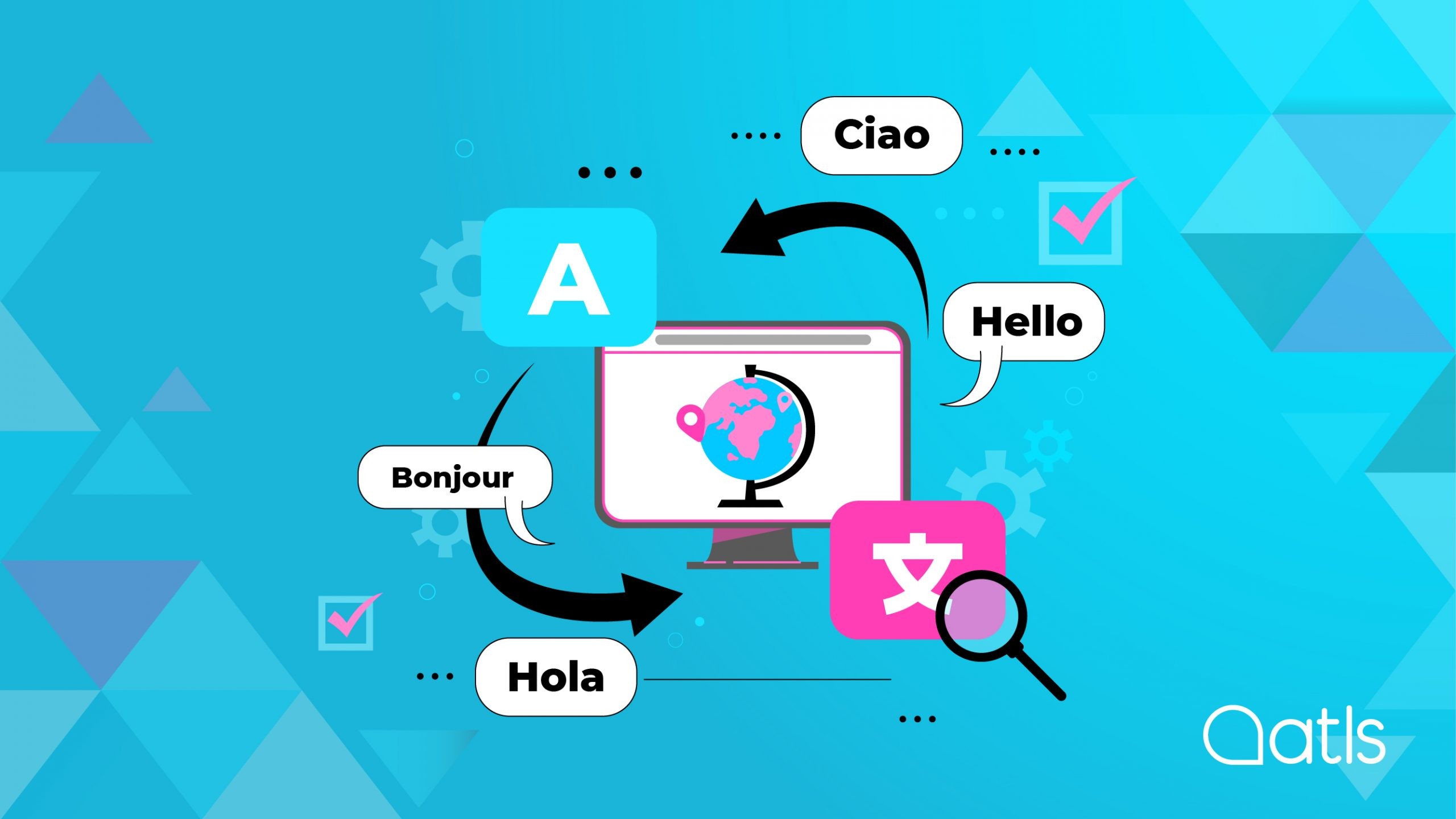
Contents
- How to translate a website The AT-WST option
- What does our AT-WST machine translation management tool consist of, and what does it do?
- Here's a step-by-step breakdown an AT-WST website translation
- What do our customers say about our AT-WST web translation tool?
- Translate your website efficiently and flexibly
In today's digital and globalised market, translating a website isn't just common, it's become almost routine. But that doesn't make it easy; to translate a website, you need a specific, sophisticated and powerful website translation tool.
It's hard to argue against the benefits of having your website translated into several languages, but when it comes to HOW you do it, things aren't so clear-cut. Because as you'll have seen on one or two (or more) websites, the results can sometimes leave a lot to be desired. The secret lies in knowing how to use the tool most suited to your needs and objectives.
In this article we'll talk about one of our proprietary website translation tools, AT-WST. But above all, we also want to give you some information to help you understand when and how to use this kind of tool.
How to translate a website The AT-WST option
You can translate a website in a number of ways; you could say none of them are inherently 'good' or 'bad', but... The 100% manual option is a headache-inducing task, but entrusting it to automatic translators like Google Translate or DeepL isn't a great idea either, believe us. So let's just reject those two methods from the get-go.
- Publish original website.
- Extract the content.
- Send content and requirements to translators.
- Receive and record translations
- Enter the translations
- Multilingual website testing
- Final corrections to format
- Publish multilingual website
Our starting point in our profession is the principle of automating processes as much as possible without sacrificing quality (just the same as a lot of industries, no doubt). That 'as much as possible' establishes the minimum level of human intervention required in each case. And you'll make that decision based on the features of the website and how far you want to go with it.
What is your website like, is it an e-commerce site, dynamic, accessible? Which languages will you translate your website into? Do you need different content for each language? What CMS do you use? Have you got multimedia content? Will you be adding new content as you go? And, above all, what volumes and timescales are we talking about?
The latter is really important when choosing a website translation tool. Why? Because you might just be looking for a minimally viable product (or as we say in the industry, something that 'gives the gist'); alternatively, you might be in search of perfection (or as we like to think about it, 'you would never know this website was a translation'). You will often be going from A to B. AT-WST is an incredibly efficient tool for managing these different scenarios or timescales.
Can I see how my website would look when translated into any language?
Do you want to try translating a website into Spanish, translating your English website into Spanish, or any other language combination? Right now? There are over a hundred to choose from, including dialectal variations (French and Canadian French, for example, or simplified and traditional Chinese).
Go here and you can see how your website will turn out translated, in a matter of seconds. As simple as entering your website and selecting your source and target languages. Our website translation tool will do the rest. If you haven't ever done it before, it's pretty amazing.
Now let's take a closer look at the translated website; Can you see anything that 'sounds strange', or obvious mistakes? There could well be (in fact, there most likely is something), depending on the type of content on the website in question. What you'll see is how your website would end up if it was translated 100% automatically - in other words, the 'raw' material which will be then worked on by our human translators.
What does our AT-WST machine translation management tool consist of, and what does it do?
Imagine your website is your shop window display, or your product/service catalogue (which actually isn't far from the truth). Imagine if you could just get a robot to do it all for you. And it does it for you. You'd take a look at the results, wouldn't you? Translating a website automatically is a similar process, and our website translation tool is the 'robot' you've been searching for.
AT-WST is based on translation proxy technology. Now for an explanation for the non-specialists. Let's call it an 'intermediary program', integrated into your chosen CMS that can sniff out new (non-translated) content on a website, manage the workflows and publish the content in the right place. This is the magic of it all: all you need to do is write your content in one language - AT-WST takes care of the rest!
What AT-WST is NOT. Automating processes, not translations
Sometimes there can be confusion surrounding the whole issue of 'automation', so maybe it's important to clarify something here.
- First there's the automatic translation. Or rather, software takes care of the task. This is what services like Google Translate do, and it is NOT what AT-WST does (we actually use other integrated tools to deal with these functionalities).
- Next comes the automation of processes, or workflows. This IS what AT-WST does, and what differentiates it from other tools: the proxy automatically manages the detection, sending, receipt and publication of the content.
Let's sum it up: with AT-WST, the machine doesn't do the translation; the translation is done by humans - professional translators. It's based on the classic computer-assisted translation (CAT) model, in which the machine gives the human translator a preliminary version of the translation. They then revise and edit the translation according to established criteria; the added value AT-WST offers it that it automatically manages the distribution of all these tasks.
What are the advantages of AT-WST proxy translation?
Like any tool, AT-WST has its own remit; it doesn't cover other requirements such as language detection or localisation of prices according to the market, for example. But it does bring significant benefits to customers. Like these:
- You just need to create content in a single language.
- Management errors reduced to practically zero.
- Significant cost reduction.
- Easy to scale and integrate with CMS tools.
- Recognition of SEO criteria (tags, code, etc.).
- High-level compatibility with servers, browsers, etc.
- Dramatic reduction in time-to-market.
- Flexible installation of infrastructure (on-cloud, on-premises or hybrid).
- Management of personal data to comply with regulations.
- Bespoke technical assistance.
Here's a step-by-step breakdown an AT-WST website translation
With a 'manual' or more traditional computer-assisted translation model, there numerous steps involved in taking the text from the original version and placing it in translation on the other version of the website; an arduous process. Aside from the time implications, humans need to take care of it all (extracting the content, sending it to translators, CAT translation, quality assurance of the content, checking the format, publishing etc, etc.). It's a much slower (and more expensive) process and more prone to errors; and imagine if you've got versions in several languages... let's not even go there.
AT-WST simplifies the workflow, and routine tasks are left in the hands of the AT-Website Translator:
- Detect the content. AT-WST automatically detects new content and sends it to our human translators. AT-WST also manages the LQA workflow (review by human professionals to ensure the linguistic quality of translation).
- Content published on the multilingual website. AT-WST publishes translated content on the multi-language website, ensuring it's properly synchronised, and that the user experience in the target languages is equivalent to that of the original language.
- Publish content.
- Detect content.
- Translate.
- Quality control.
- Publish the multilingual website.
What do our customers say about our AT-WST web translation tool?
To illustrate the powers of a tool like AT-WST, nothing beats testimonials from real and successful case studies.
- Fremap is a mutual society that collaborates with the Spain's Social Security Institute. This is an extremely dynamic, constantly changing website, and they needed to create versions of it in all of Spain's official languages, as well as English. AT-WST takes on the task of sending new materials to translators specialising in healthcare and insurance, as well as the format/layout of the translations.
- Porcelanosa is a prestigious manufacturer of ceramic floor and wall tiles, among other solutions. With eight companies in the group and a presence in 134 countries, the blog translation requirements were epic. With AT-WST, every time the customer generates new content on the website, the software automatically detects it and sends it to us for translation. Once the translation has been finalised by our native translators, AT Website Translator publishes it in the Trendbook in all the relevant languages with optimised SEO. That way, Porcelanosa Group can have a multi-language blog that's translated and published automatically, without them having to intervene in the process at all.
Translate your website efficiently and flexibly
Into English, Chinese, Russian, etc... And all in line with your capacity, your pace, your budget. When it comes to translating your website with AT-WST, some things are non-negotiable: the efficiency of the translation process and agility of workflows.
In fact, our AT-WST proxy solution is just one more tool in our toolbox; feel free to take a look at the rest of our kit - you may find a better fit for your needs. Whichever tool you choose, you'll see that human supervision by professional translators is a constant. Seriously, try an automatic website translation for free with our website translation tool so you can see how it turns out. If you need to translate a website, get ready for a true watershed moment.

